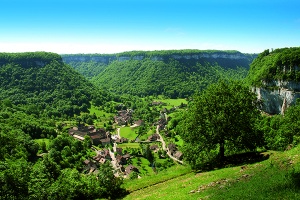Jura most badly hit French region, with vintage down 63% on 2018

Severe weather has hit many French regions hard, but Jura has been the most badly affected, with yields down by around 63% this year due to frost.
Spring frosts, summer heat and hail have all combined to lower France’s 2019 wine harvest by an expected 12% compared to 2018 – with that year already 4% lower than the five-year average according to France’s agricultural statistics office Agreste.
The damp, cold spring, it said, had proved particularly challenging in the west of France, while the summer heatwaves took their greatest toll in the Midi, Gard, Hérault and the Var and in August, Beaujolais was devastated by hailstorms, with average losses of between 20% and 50%, with a potential volume loss of 25%.
On the positive side, Agreste said the health of the country’s vineyards in mid-August was “globally good” with most diseases and pests well under control.
The country’s total 2019 wine harvest volume is expected to weigh in at about 43.4m hectolitres, which would be one of the lowest in the past five years. Barring, that is, the historically low 2017 harvest (36.7m hectolitres) which was hit by widespread frost.
There were some regions which saw volumes increase, notably Corsica, where yields were up by 1% and the south east (Rhône, Languedoc-Roussillon and Provence), up by 5%.
“The frost was pretty bad,” Jonathan Ducourt, sales and marketing manager for Vignobles Ducourt told Meiningers. “In our case it really hit the whites. Of 120 hectares, mainly in Entre-deux-Mer, we lost 25% to 30%. That’s because they are on lower ground. We also had to deal with coulure [where younger berries fail to properly develop].”
The Côtes de Castillon reds were also damaged with losses in the region of around 50%. “But that is only about 10% of our total red area,” said Ducourt. For the remaining 300 red hectares he was more upbeat. “We just need a bit of rain to plump out the grapes and then a nice bit of sun.” However, Ducourt hesitated to pile all the blame on climate change.
“Last year was good. This year, yes, the frost was a bit worse than normal. And the summer was hotter. But in Bordeaux a loss of 5% is not dramatic. It’s really not bad compared to 2017.” As for wine quality, Ducourt said what was left of the whites, currently being picked , was fresh and crisp. The reds, meanwhile, given the right conditions over the next few weeks, could be equally promising.
